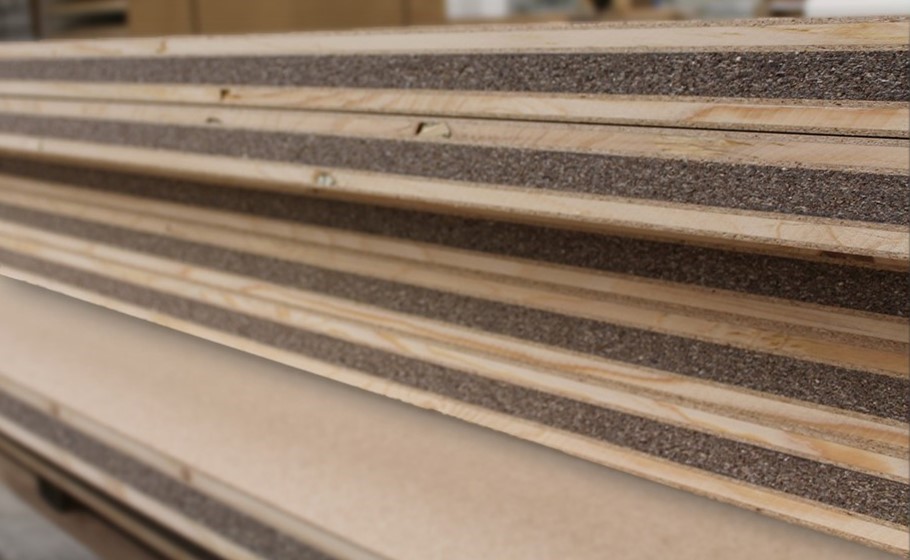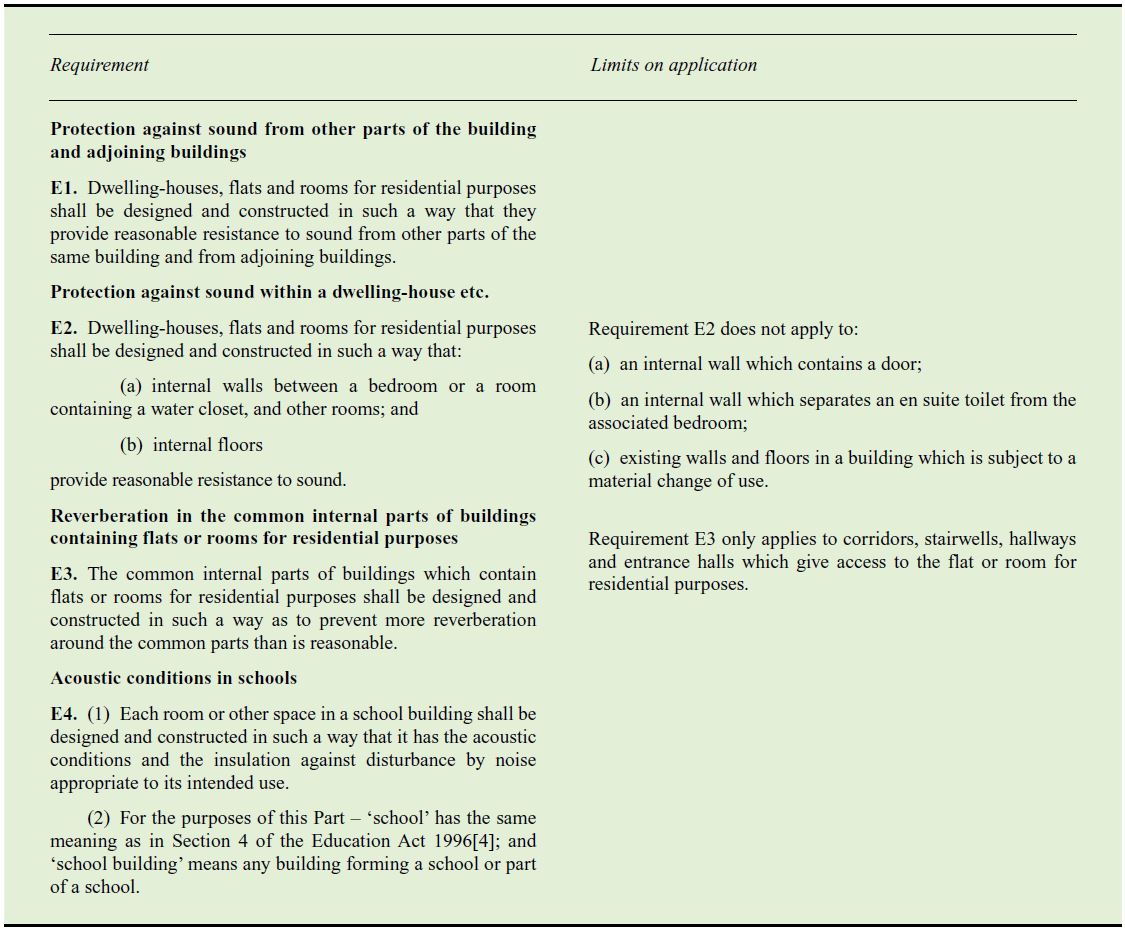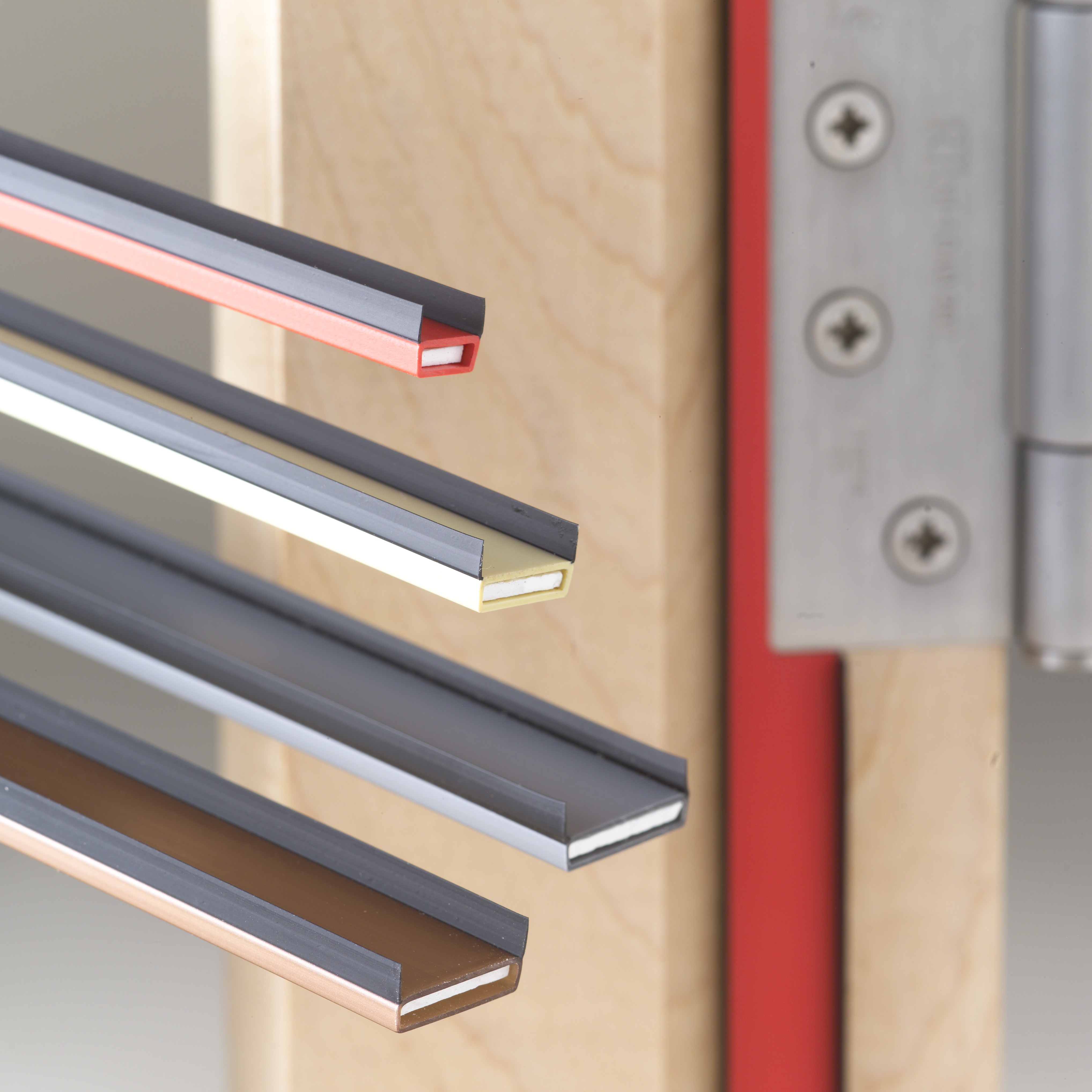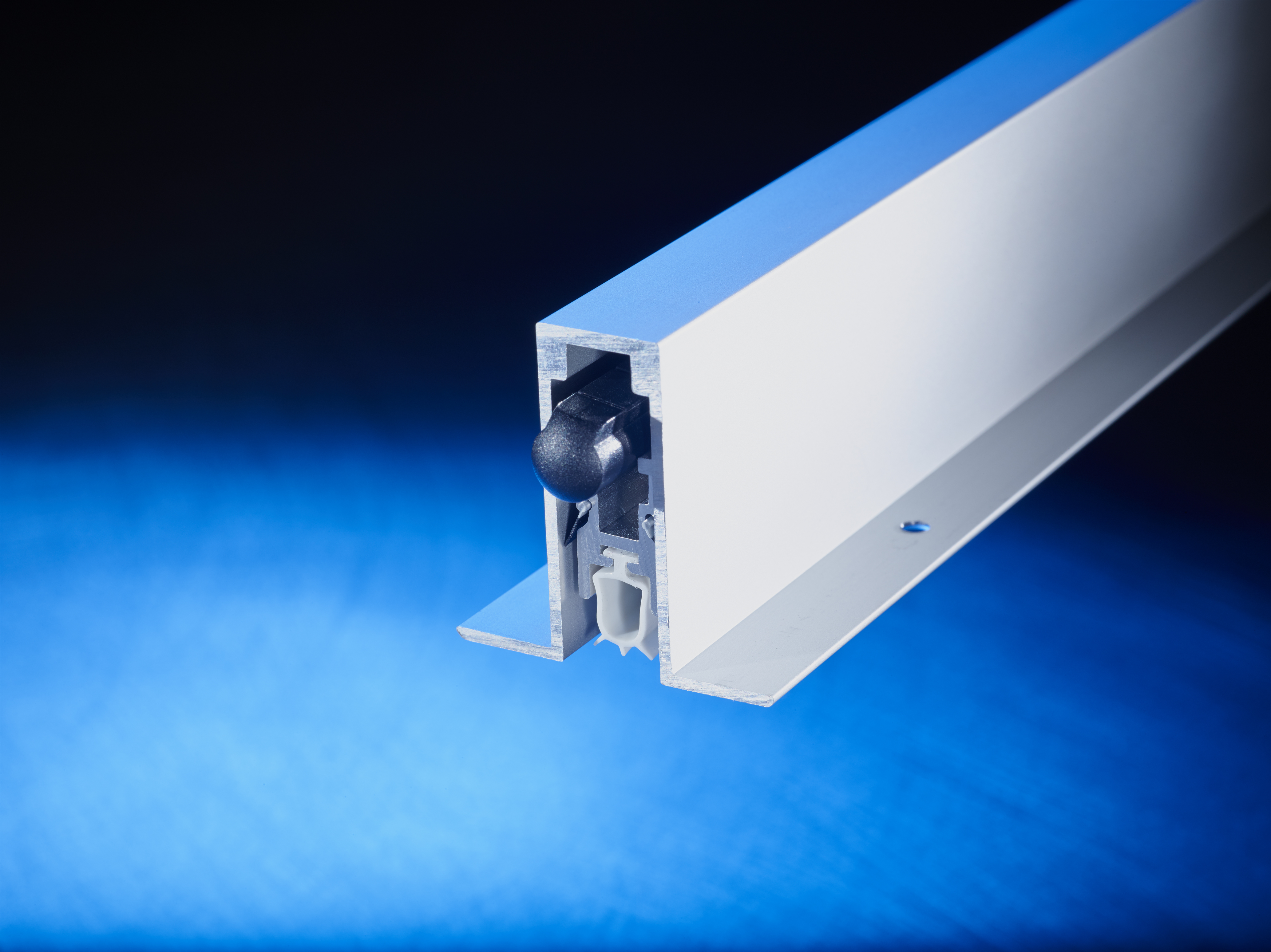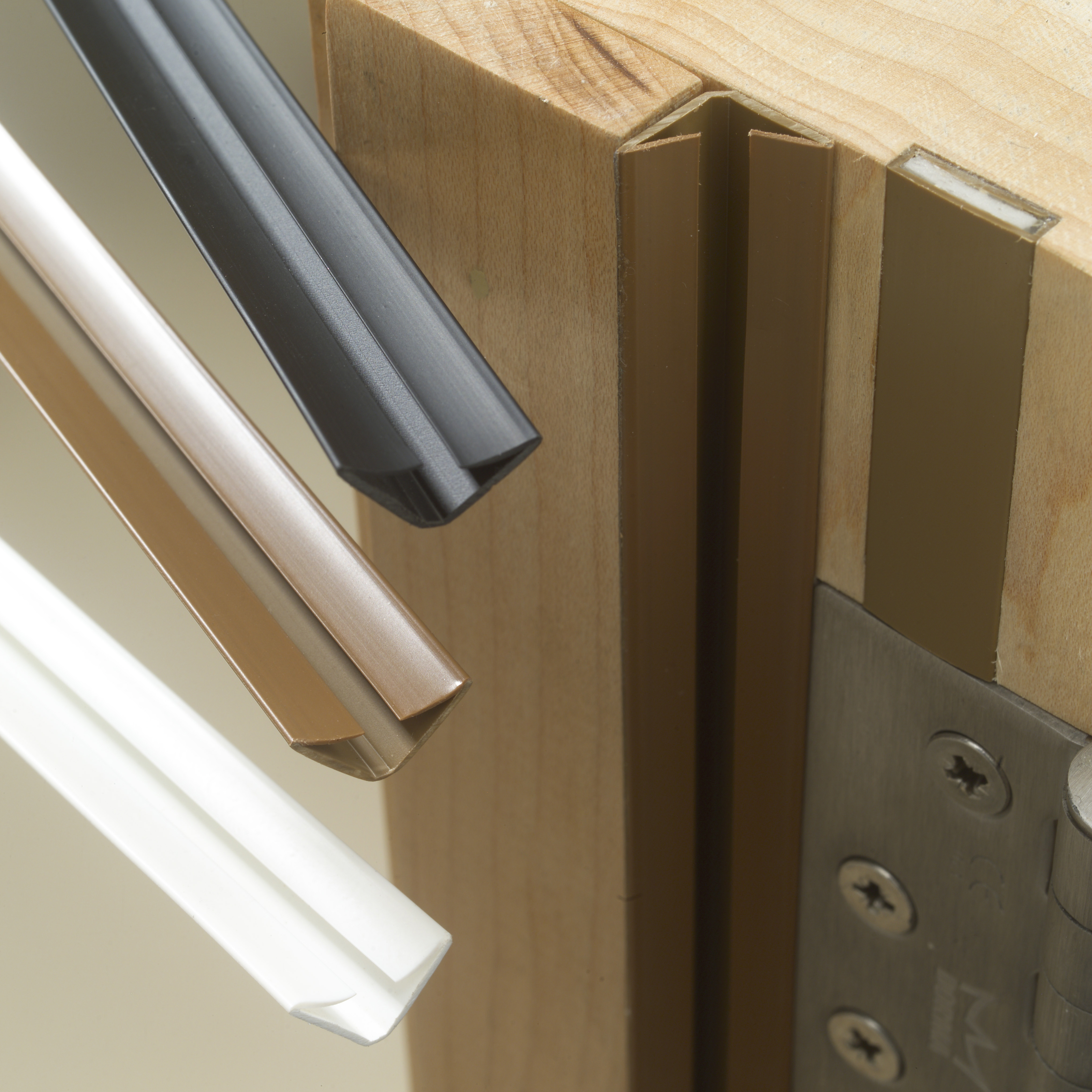Acoustic Information
An extensive technical product with an impressive performance. After comprehensive test programs, Principal Doorsets offers an impressive range of products to your performance requirements. Our acoustic door sets are available in multiple acoustic performances. They provide you with all the options of functional doors of excellent quality with highest flexibility and a great diversity. We offer a selection of accessories to enhance the product. You can benefit from a high-quality solution to realise efficiency with design-oriented solutions at high technical levels.
Technical Guidance & Part E
Technical guidance contained in Part E (Approved Document E) of schedule 1 of the Building Regulations will be covered within this section.
HM Government Approved Document Part E link.
Permission HM Government under open government licence Link
This current edition of Approved Document E - Resistance to the passage of sound, has been updated to include a new reference to standards for schools. It also incorporates previous amendments.
There has been no amendment to the requirements in Part E of Schedule 1 to the Building Regulations 2010
Acoustics within buildings is a specialist subject and needs to be considered carefully if the appropriate levels of attenuation and cost control are to be delivered. Principal Doorsets works closely with local providers with full acoustic booths and qualifications to advise on this subject. We are able to provide fully, product up to 43dB Rw. Because of the demands delivering high attenuation it is worth consulting with us on the surrounding environment, as this can play a major part in achieving compliance. Effects of acoustic privacy or nuisance noise are subjective with influences from background ambient noise levels within a situation. The distance from source of noise, frequency and general context along with additional factors play a part in controlling the passage of sound and what end result can be achieved.
Building regulations specific to acoustic control, fall within Approved Part E of the regulations there has been several amendments (2003, 2004, 2101, 2013 and 2015) which include quantifiable performance levels with provision for a wider scope in residential buildings, education (referring to DfE guidelines). Best practice approach should be observed for non-residential buildings which are not covered within regulation.
Guidance Part E
The building types covered within the document include: Houses and self-contained flats, ‘Rooms for residential purposes’ (RRPs) used for living or sleeping but not a flat, for example within hotels, hostels, student accommodation and elderly persons’ homes and ‘Schools’ (there are additional standards set out on "Acoustic design of schools: Performance Standards", Building Bulletin 93 issue February 2015 Link Typically doorset with a sound reduction index of 30dB Rw are specified throughout general areas of school, with the addition of higher values (minimum 35 dB Rw) required in some areas, e.g. Music rooms, Drama rooms, or teaching areas used by students with particular hearing or communication needs.
Evaluation of doors within their adjoining walls need to be considered as there are so many variables that can affect attenuation, particularly ratio of door to wall. The latest acoustic products from Principal Doorsets are capable of satisfying beneficial sound reduction obligations economically.
In the main the document calls for good perimeter sealing (including threshold where practical), a sound reduction index of 29 dB Rw or a minimum mass per unit area of 25 kg/m2 The applicable standards are BS EN ISO 140-3:1995 (Measured) and BS EN ISO 717-1:1997 (rating). Generally, test results are for single leaf doorsets. A reduction of some 2-3 dB Rw can be expected for pairs of doors. Double action doors situations are not practical in achieve acceptable results. Acoustic Doors should have threshold seals of either wiper or drop fitted to the leafs.
All gaps between wall and back of frame should be thoroughly packed with mineral wool and sealed both sides with a mastic compound at a minimum depth of 10mm. Particular care is needed to ensure that doors close correctly with no gaps all around their perimeter. There will be a small resistance when the door closes against its seals.
Lightweight doors with poor perimeter sealing provide lower standard of sound insulation than walls. This will have the effect of lowering the sound insulation of the internal walls.
It is worthy of note that the use of perimeter seals and heavier core densities particularly with higher rated product, have a trade off with opening forces.
Acoustic doors can be supplied with full fire ratings.
Within the document new homes and Rooms for residential purposes - should comply with current Part E and cover the following:
- Doors within separating walls
- Flat entrance doors
- Bedroom doors in student accommodation
- Bedroom doors in hotels
- Existing homes and Rooms for residential purposes
In order to achieve the designed acoustic performance on site, air gaps must be eliminated and all components should fit as intended, as any leakage of air will reduce effectiveness of the attenuation. The best way to achieve compliance is with fully engineered, factory finished performance doorsets which can be supplied with all the necessary seals fitted to either door or frame, and where necessary including astragals for pairs of doors.
Document E does not cover healthcare, consider guidance stated within Health Technical Memorandums (HTMs).
It should be noted: performance standards listed for products and ranges are based on laboratory test conditions and their subsequent results. Testing in situ after installation will generally result in lower outcomes.
Please contact the Technical Sales Department for further advice.

